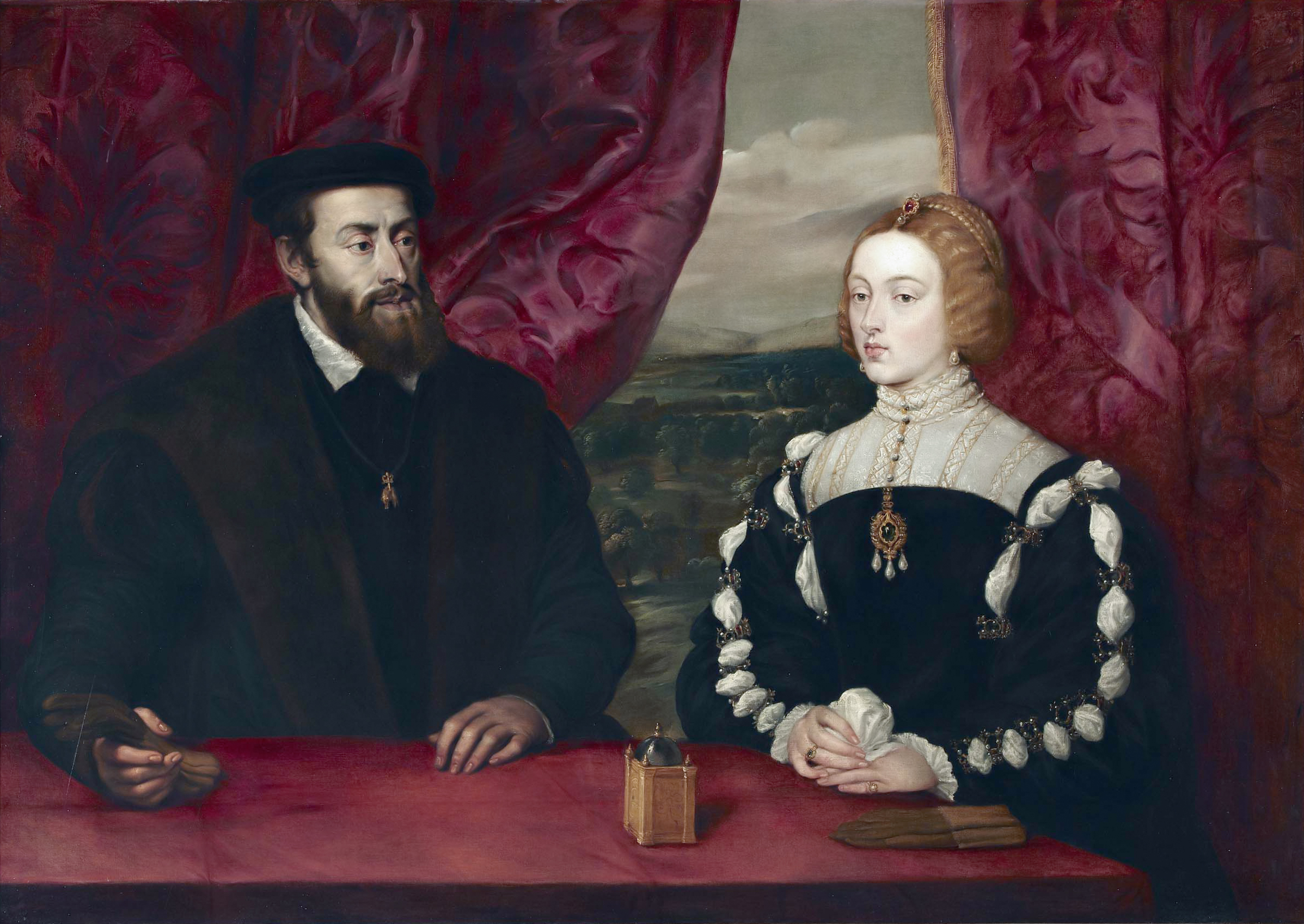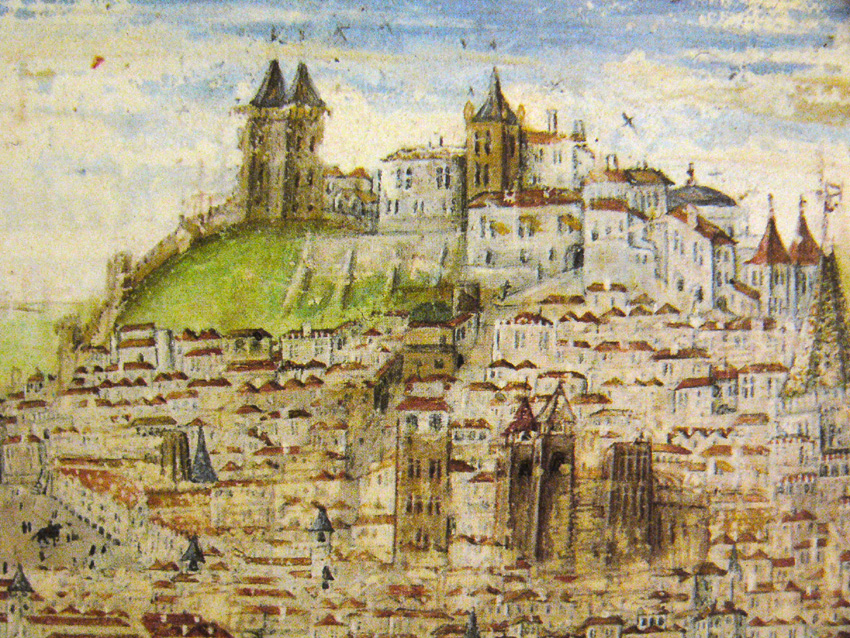|
João De Lencastre, 1st Duke Of Aveiro
João de Lencastre (1501 – 1571 in Coimbra), was the older son of Jorge de Lencastre, Duke of Coimbra and of his wife ''Dona'' Beatriz of Vilhena. Through his father, John was a grandchild of King John II of Portugal and a 3rd cousin to King Manuel I of Portugal. Through his mother, daughter of Álvaro of Braganza (4th male son of Fernando I, 2nd Duke of Braganza), John of Lencastre was closely related to the most prestigious aristocratic families of the Kingdom (namely the Duke of Braganza, the Marquis of Ferreira, the Marquis of Vila Real, the Count of Vimioso and the Count of Portalegre). When he was 12 years old, he served crown prince John (who became later King John III of Portugal) and King Manuel I granted him the title of Marquis of Torres Novas by a royal decree issued on March 27, 1520. In that time, the royal house announced the marriage of Infante Ferdinand, Duke of Guarda (younger son of King Manuel I) to one of the country's richest and most prestigious heires ... [...More Info...] [...Related Items...] OR: [Wikipedia] [Google] [Baidu] |
Duke Of Aveiro
Duke of Aveiro ( pt, Duque de Aveiro) was a Portuguese title of nobility, granted in 1535 by King John III of Portugal to his 4th cousin, John of Lencastre, son of Infante George of Lencastre, a natural son of King John II of Portugal. John of Lencastre was already Marquis of Torres Novas when the King granted him the new title of Duke of Aveiro. Later, their descendants strongly supported Philip II of Spain during the 1580 Portuguese succession crisis. Thus the Dukes became the second aristocratic House of Portugal, after the Braganzas. Raimundo of Lencastre, 4th Duke of Aveiro maintained his House's traditional support for the Habsburg monarchy, even after the 1640 national revolution in Portugal. Therefore the Aveiro property was confiscated by the new Kings of the Braganza Dynasty, and granted in 1668 to his uncle, Peter of Lencastre, who already was Archbishop of Évora and general Inquisitor, becoming 5th Duke of Aveiro. He died in 1673 without issue. The success ... [...More Info...] [...Related Items...] OR: [Wikipedia] [Google] [Baidu] |
Crown Prince
A crown prince or hereditary prince is the heir apparent to the throne in a royal or imperial monarchy. The female form of the title is crown princess, which may refer either to an heiress apparent or, especially in earlier times, to the wife of the person styled crown prince. ''Crown prince'' as a descriptive term has been used throughout history for the prince who is first-in-line to a throne and is expected to succeed (i.e. the heir apparent), barring any unforeseen future event preventing this. In certain monarchies, a more specific substantive title A substantive title is a title of nobility or royalty acquired either by individual grant or inheritance. It is to be distinguished from a title shared among cadets, borne as a courtesy title by a peer's relatives, or acquired through marriage. ... may be accorded and become associated with the position of '' heir apparent'' (e.g. Prince of Wales in the United Kingdom or Prince of Asturias in the Spain, Kingdom of Spain) ... [...More Info...] [...Related Items...] OR: [Wikipedia] [Google] [Baidu] |
Isabel Of Portugal
Isabella of Portugal (24 October 1503 – 1 May 1539) was the empress consort and queen consort of her cousin Charles V, Holy Roman Emperor, King of Spain, Archduke of Austria, and Duke of Burgundy. She was Queen of Spain and Germany, and Lady of the Netherlands from 10 March 1526 until her death in 1539, and became Holy Roman Empress and Queen of Italy in February 1530. She was the regent of Spain because of her husband's constant travels through Europe, focusing on the kingdom's policies independent of the Empire and managing the economy. Childhood Isabella was born in Lisbon on 24 October 1503 and named after her maternal grandmother (Isabella I) as well as her maternal aunt, who had been her father's first wife. She was the second child and first daughter of King Manuel I of Portugal and his second wife, Maria of Aragon. Isabella was second-in-line to the throne until the birth of her brother Luis in 1506. Isabella was educated under the supervision of her governess ... [...More Info...] [...Related Items...] OR: [Wikipedia] [Google] [Baidu] |
Charles V, Holy Roman Emperor
Charles V, french: Charles Quint, it, Carlo V, nl, Karel V, ca, Carles V, la, Carolus V (24 February 1500 – 21 September 1558) was Holy Roman Emperor and Archduke of Austria from 1519 to 1556, King of Spain (Crown of Castile, Castile and Crown of Aragon, Aragon) from 1516 to 1556, and Lord of the Netherlands as titular Duke of Burgundy from 1506 to 1555. He was heir to and then head of the rising House of Habsburg during the first half of the 16th century, his dominions in Europe included the Holy Roman Empire, extending from Kingdom of Germany, Germany to Kingdom of Italy (Holy Roman Empire), northern Italy with direct rule over the Austrian hereditary lands and the Burgundian Low Countries, and Habsburg Spain, Spain with its southern Italy, southern Italian possessions of Kingdom of Naples, Naples, Kingdom of Sicily, Sicily, and Kingdom of Sardinia, Sardinia. He oversaw both the continuation of the long-lasting Spanish colonization of the Americas and the short-live ... [...More Info...] [...Related Items...] OR: [Wikipedia] [Google] [Baidu] |
Madrid
Madrid ( , ) is the capital and most populous city of Spain. The city has almost 3.4 million inhabitants and a metropolitan area population of approximately 6.7 million. It is the second-largest city in the European Union (EU), and its monocentric metropolitan area is the third-largest in the EU.United Nations Department of Economic and Social AffairWorld Urbanization Prospects (2007 revision), (United Nations, 2008), Table A.12. Data for 2007. The municipality covers geographical area. Madrid lies on the River Manzanares in the central part of the Iberian Peninsula. Capital city of both Spain (almost without interruption since 1561) and the surrounding autonomous community of Madrid (since 1983), it is also the political, economic and cultural centre of the country. The city is situated on an elevated plain about from the closest seaside location. The climate of Madrid features hot summers and cool winters. The Madrid urban agglomeration has the second-large ... [...More Info...] [...Related Items...] OR: [Wikipedia] [Google] [Baidu] |
Conquest Of Tunis (1535)
The Habsburg Empire of Charles V and its allies conquered Tunis in 1535, wresting the city away from the control of the Ottoman Empire. Background In 1533, Suleiman the Magnificent ordered Hayreddin Barbarossa, whom he had summoned from Algiers, to build a large war fleet in the arsenal of Constantinople. Altogether 70 galleys were built during the winter of 1533–1534, manned by slave oarsmen, including 2,000 Jewish ones. With this fleet, Barbarossa conducted aggressive raids along the coast of Italy, until he conquered Tunis on 16 August 1534, ousting the local ruler, theretofore subservient to the Spanish, Muley Hasan.Crowley, p.58 Barbarossa thus established a strong naval base in Tunis, which could be used for raids in the region, and on nearby Malta. Charles V assembled a large army of some 30,000 soldiers, 74 galleys (rowed by chained Protestants shipped in from Antwerp),Crowley, p.59 and 300 sailing ships, including the carrack ''Santa Anna'' and the Portugue ... [...More Info...] [...Related Items...] OR: [Wikipedia] [Google] [Baidu] |
Infante Luis, Duke Of Beja
''Infante'' (, ; f. ''infanta''), also anglicised as Infant or translated as Prince, is the title and rank given in the Iberian kingdoms of Spain (including the predecessor kingdoms of Aragon, Castile, Navarre, and León) and Portugal to the sons and daughters (''infantas'') of the king, regardless of age, sometimes with the exception of the heir apparent or heir presumptive to the throne who usually bears a unique princely or ducal title.de Badts de Cugnac, Chantal. Coutant de Saisseval, Guy. ''Le Petit Gotha''. Nouvelle Imprimerie Laballery, Paris 2002, p. 303, 364-369, 398, 406, 740-742, 756-758 (French) A woman married to a male ''infante'' was accorded the title of ''infanta'' if the marriage was dynastically approved (e.g., Princess Alicia of Bourbon-Parma), although since 1987 this is no longer automatically the case in Spain (e.g., Princess Anne d'Orléans). Husbands of born ''infantas'' did not obtain the title of ''infante'' through marriage (unlike most heredit ... [...More Info...] [...Related Items...] OR: [Wikipedia] [Google] [Baidu] |
Setúbal
Setúbal (, , ; cel-x-proto, Caetobrix) is a city and a municipality in Portugal. The population in 2014 was 118,166, occupying an area of . The city itself had 89,303 inhabitants in 2001. It lies within the Lisbon metropolitan area. In the times of Al-Andalus the city was known as ''Shaṭūbar'' (Andalusian Arabic: ). In the 19th century, the port was called ''Saint Ubes'' in English, and ''Saint-Yves'' in French. The municipal holiday is 15 September, which marks the date in 1860 when Pedro V of Portugal, King Pedro V of Portugal officially recognised Setúbal as a city. City information The city of Setúbal is located on the northern bank of the Sado River estuary, approximately south of Portugal's capital, Lisbon. It is also the seat of the Setúbal District and formerly in the historic Estremadura Province (1936-1976), Estremadura Province. In the beginning of the 20th century, Setúbal was the most important center of Portugal's fishing industry, particularly sp ... [...More Info...] [...Related Items...] OR: [Wikipedia] [Google] [Baidu] |
Lisbon
Lisbon (; pt, Lisboa ) is the capital and largest city of Portugal, with an estimated population of 544,851 within its administrative limits in an area of 100.05 km2. Grande Lisboa, Lisbon's urban area extends beyond the city's administrative limits with a population of around 2.7 million people, being the List of urban areas of the European Union, 11th-most populous urban area in the European Union.Demographia: World Urban Areas - demographia.com, 06.2021 About 3 million people live in the Lisbon metropolitan area, making it the third largest metropolitan area in the Iberian Peninsula, after Madrid and Barcelona. It represents approximately 27% of the country's population. [...More Info...] [...Related Items...] OR: [Wikipedia] [Google] [Baidu] |
Castle Of São Jorge
Saint George's Castle ( pt, Castelo de São Jorge; ) is a historic castle in the Portuguese capital of Lisbon, located in the ''freguesia'' of Santa Maria Maior. Human occupation of the castle hill dates to at least the 8th century BC while the first fortifications built date from the 1st century BC. The hill on which Saint George's Castle stands has played an important part in the history of Lisbon, having served as the location of fortifications occupied successively by Phoenicians, Carthaginians, Romans, and Moors, before its conquest by the Portuguese in the 1147 Siege of Lisbon. Since the 12th century, the castle has variously served as a royal palace, a military barracks, home of the Torre do Tombo National Archive, and now as a national monument and museum. History Although the first fortifications on this hilltop date from the 1st century BC, archaeological excavations have identified a human presence in the Tagus valley as far back as the 8th century BC. The first fo ... [...More Info...] [...Related Items...] OR: [Wikipedia] [Google] [Baidu] |






